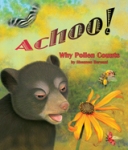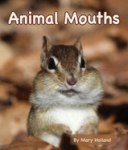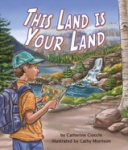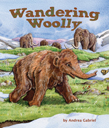new posts in all blogs
Viewing Blog: , Most Recent at Top
Results 26 - 50 of 59
Statistics for
Number of Readers that added this blog to their MyJacketFlap:
By: Arbordale Publishing,
on 9/17/2015
Blog:
(
Login to Add to MyJacketFlap)
JacketFlap tags:
cathy morrison,
science and math books,
Arbordale Posts,
tortoise and hare,
kids books,
giveaway,
children's activities,
book launch,
marianne berkes,
Add a tag
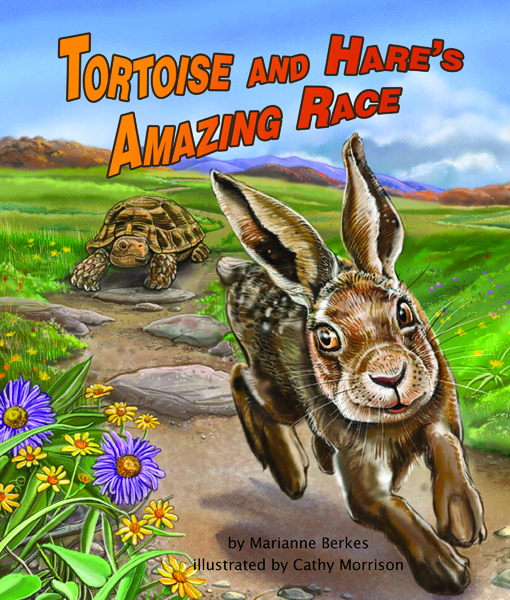 Marianne Berkes and Cathy Morrison are not newcomers to children’s books, Tortoise and Hare’s Amazing Race is their third book together at Arbordale and individually each of these ladies has an impressive collection of stories and book awards. We are happy to release this adaptation of the classic fable and bring a bit of math into the race!
Marianne Berkes and Cathy Morrison are not newcomers to children’s books, Tortoise and Hare’s Amazing Race is their third book together at Arbordale and individually each of these ladies has an impressive collection of stories and book awards. We are happy to release this adaptation of the classic fable and bring a bit of math into the race!
To learn more about the inspiration behind Marianne’s writing here is a sample of her interview:
 What drew you to writing, children’s books ?
What drew you to writing, children’s books ?
As a child our home was filled with books and music. I wrote plays that my friends and I performed in the summer, in our backyard. My dad even helped us build some of the scenery. Reading, writing, music and theater have been a constant in my life. In high school I did interviews for the school paper, and in college wrote my first picture book for a children’s lit class. But it was many years later, after I moved to Florida, that I said “I can do this!” Reading so many books to children at the library where I worked, I kept coming up with ideas of my own. Because I love kids and love “words” I started submitting my stories to publishers, and one day…
What do you hope children get out of your stories?
An appreciation of our earth and respect for nature. I spent a lot of time outdoors as a child and still do. Discovering nature is a life-long adventure that I hope kids today still appreciate. Nature has so many stories to tell and is available to anybody, any place, any time. I hope kids will be entertained by my books, but also that they will want to learn more about the topic. My first book, published in 2000, was about frogs making music in the night. Hopefully after reading this book, kids will go outside in the early evening, especially after a rain, and listen for the sounds I’ve written about. I’ve followed with stories about birds, shells, creatures living in an ocean reef, rainforest animals, Arctic animals, animals that migrate, Australian animals, forest animals (like Polly Possum) and river animals. In Arbordale’s The Tree that Bear Climbed kids also learn how a tree grows, and Daisylocks is about plant life. I’ve also written a book about the planets that I hope kids enjoy. How can we ask them to save the earth, if they don’t learn to appreciate it first? My books are lyrical in verse, making it easy and fun for kids to read with lots of fact blended in. I want kids to really get inside my books, to read them more than once, each time finding something new and exciting!
Do you want to know more read the full interview here!
Leave a comment and enter to win your own copy of Tortoise and Hare’s Amazing Race! Then click below for fun math activities in the For Creative Minds section.



By: Arbordale Publishing,
on 9/16/2015
Blog:
(
Login to Add to MyJacketFlap)
JacketFlap tags:
Laurie Allen Klein,
they just know,
animal instincts,
Robin Yardi,
Children's Books,
picture books,
animals,
Book Giveaway,
Book Launches,
book launch,
Add a tag
 Robin Yardi is releasing her first picture book this week, They Just Know: Animal Instincts. The combination of the whimsical and real life come together perfectly with Laurie Allen Klein’s art as readers learn how some animals don’t need mom and dad to show them the way, they just know!
Robin Yardi is releasing her first picture book this week, They Just Know: Animal Instincts. The combination of the whimsical and real life come together perfectly with Laurie Allen Klein’s art as readers learn how some animals don’t need mom and dad to show them the way, they just know!
Before we get to the inside scoop on hidden gems in the art meet Robin and find out how this story came to be…
 What was your incentive to write this particular book?
What was your incentive to write this particular book?
When my daughter was young we loved to talk about animals that didn’t need their mothers. I remember playing mommy and baby butterfly with her (a game of her invention) and trying to explain, “Well actually, butterflies never meet their mothers.” You should have seen her face! “Who teaches them to fly?” she asked. “Who makes them breakfast?” After years and years of watching butterflies in our garden this still amazes her, so I thought a book about the wonderful things animals can do all on their own would appeal to other kids too.
What animals in They Just Know have you seen before?
that winter and really don’t have many left. Now when I find ladybugs I give them to my children to wish on.
I’ve never seen a spring peeper, or pinkletink as some people call them, but I do love and worry about the world’s amphibians. I’ve had pet frogs and toads and once ended up with about two hundred tadpoles!
I’ve swum among Green Sea Turtles in the waters of Hawai’i. These turtles are protected and you cannot touch them, but you can look deep, deep into their eyes. I’ve rarely seen anything so beautiful, curious and gentle.
As a kid in California I caught two species of kingsnake, both strikingly and stripingly beautiful!
To read the full interview with Robin, click here, but first play find and seek throughout the book with Laurie Allen Klein’s art!
Hide and Seek in They Just Know
 (hint, Laurie answers these questions on Nonfiction Nook, but see if you can find them yourself)
(hint, Laurie answers these questions on Nonfiction Nook, but see if you can find them yourself)
- Find the t-shirt with all the animals from the book pictured on it.
- Which way is the current headed for the baby swimming turtles?
- What kind of “helmet” might a ladybug wear for flying?
- If a shark needed a nightlight what kind of fish serves that purpose?
- First flights are celebrated with a ritual, why is a cut t-shirt so special?
- What is the equation on the frog’s blackboard showing?

- What game are the king snakes playing?
- What other Arbordale book is pictured within the pages here?
Comment here and enter to win your own copy of They Just Know!


By: Arbordale Publishing,
on 9/15/2015
Blog:
(
Login to Add to MyJacketFlap)
JacketFlap tags:
picture books,
Book Giveaway,
author interview,
giveaway,
Book Launches,
book launch,
folktale,
coloring pages,
The Sparrow and the Trees,
Add a tag
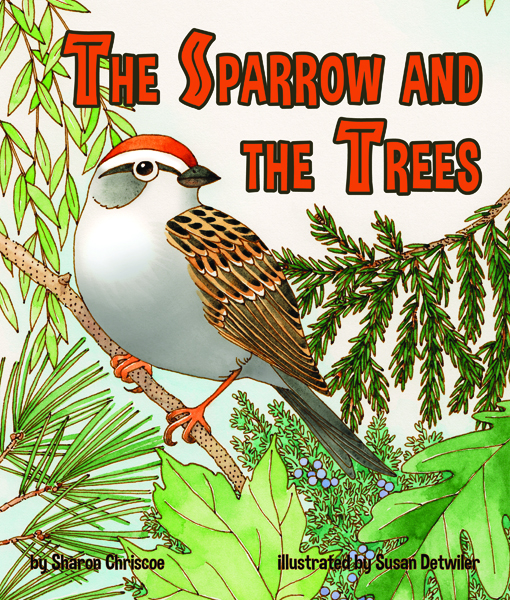 Some writers always knew that they were destined to tell stories, others came to the craft a little later. That was the case with new author Sharon Chriscoe. Her first picture book The Sparrow and the Trees is a retelling of a native folktale that explains why some trees lose their leaves in winter while others do not.
Some writers always knew that they were destined to tell stories, others came to the craft a little later. That was the case with new author Sharon Chriscoe. Her first picture book The Sparrow and the Trees is a retelling of a native folktale that explains why some trees lose their leaves in winter while others do not.
Find out why Sharon chose to retell this story:
 What was your incentive to write this particular book?
What was your incentive to write this particular book?
I love the Native American folklore, Why The Trees Lose Their Leaves, and it was exciting to base my own story on that wonderful folklore. It was the story I was meant to write. I was thrilled when Arbordale agreed and offered publication.
What is most rewarding and/or challenging about writing children’s books?
The most rewarding aspect of writing The Sparrow and The Trees for Arbordale is knowing that children all around the world are going to read and learn from my book. Arbordale is so fantastic with the amount of educational elements they include with each of their books, from online resources to worksheets to Creative Minds Information — there is something for everyone to learn. I learned a lot while researching this book!
Do you have any advice for parents of young readers and writers?
Read to your children every day. Make it a fun, memorable experience and they will become lifelong readers. One of my favorite quotes is “Children are made readers on the laps of their parents.” — Emilie Buchwald.
Get the full interview on the book’s home page, click here!
Don’t forget comment on this post to win a copy of The Sparrow and the Trees. And color to your hearts content with these fun pages.





By: Arbordale Publishing,
on 9/14/2015
Blog:
(
Login to Add to MyJacketFlap)
JacketFlap tags:
Book Launches,
book launch,
phyllis saroff,
lion craft,
sound activities,
Sounds of the Savanna,
terry catasus jennings,
Children's Books,
picture books,
animals,
Book Giveaway,
Add a tag
 Terry Catasús Jennings has a talent for taking a simple concept and telling a great story. In her newest book Sounds of the Savanna, Terry takes readers to the African plains and shows them how important sound is to the animals that live in this habitat.
Terry Catasús Jennings has a talent for taking a simple concept and telling a great story. In her newest book Sounds of the Savanna, Terry takes readers to the African plains and shows them how important sound is to the animals that live in this habitat.
Get to know a little more about Terry’s writing:
 How did you first become interested in writing, and writing for children’s picture books?
How did you first become interested in writing, and writing for children’s picture books?
When I read Little Women by Louisa May Alcott as a very young girl, I knew I wanted to be a writer, just like Jo March. I believe though, that I would have ended up being a writer even if I hadn’t read the book. Stories are always rolling around in my head. Whenever something happens I like to report on it, like writing a newspaper story, in my head. I also like to figure out why people may have acted in a particular way, so I take what happens and I figure out a plot line that may have led them to their actions. Sounds crazy, doesn’t it? What I like best of all is figuring out the very best way to convey each message—the best words to use, how to form each sentence and that is especially important in a picture book. I love to use the rhythm of language when I write a picture book. It’s almost like writing a poem.
Do you have any tips for aspiring writers?
Read, read, read. Write, write, write. Look at the world with curiosity and try to figure out why things happen they way they do and why people act the way they do. Listen to people talk. Pay special attention to how they move. Capture a scene as if you were a movie camera and store it in your mind. You’ll use all those things that you have stored in your mind when you write your books.
You can read the full interview here!
But first here is a great roaring lion craft to go along with the book’s For Creative Minds section, check it out.
 What you will need:
What you will need:
- You can use felt or paper (for our mask we used paper).
- You will need light brown, dark brown or black, A shade of red/pink, and white.
- Scissors and a pencil
- A large circle and small circular container for tracing
- A stick, for ours we used a pipe cleaner
- On tan paper use the large circle and trace three circles in a heart shape pattern. Connect the two top circles to the bottom and cut out your back portion.
- On the same paper trace two circles connect them together at the top to form a straight line and cut those out. For the nose of your lion.
- On the dark brown or black paper use the smaller circle and repeat step one. This will form your open mouth.
- Again on the dark paper cut a triangle for the nose and then round the edges
- On the pink paper use the bottom of the open mouth form and trace the lower portion of the tongue. Use your small circle to overlap and form the heart shape of the top of the tongue.
- On white paper cut two narrow triangles.
- Glue the dark mouth to the background, glue the tongue in place and then the teeth. Glue the triangle nose onto the tan nose, then glue that on top of your lion mouth.
- Tape or glue a stick to the back and you have your finished roaring lion!
Leave a comment and enter to win a copy of Sounds of the Savanna!


By: Arbordale Publishing,
on 9/13/2015
Blog:
(
Login to Add to MyJacketFlap)
JacketFlap tags:
jennifer keats curtis,
grey wolf,
the lucky litter,
wildfire rescue,
non-fiction,
Book Giveaway,
giveaway,
Book Launches,
book launch,
Add a tag
 It’s no secret; at Arbordale we are big fans of Jennifer Keats Curtis and her ability to write wonderful books about animals. This season she pairs up with John Gomes again to bring us The Lucky Litter: Wolf Pups Rescued from Wildfire. John’s beautiful photographs really bring out the personality in these cute pups and paired with Jennifer’s insightful words, this book is already getting praise…
It’s no secret; at Arbordale we are big fans of Jennifer Keats Curtis and her ability to write wonderful books about animals. This season she pairs up with John Gomes again to bring us The Lucky Litter: Wolf Pups Rescued from Wildfire. John’s beautiful photographs really bring out the personality in these cute pups and paired with Jennifer’s insightful words, this book is already getting praise…
“This is a charming tale full of child appeal for young readers who love true animal stories. The large font, bold type, and short but informative sentences make for easy, comfortable reading.” -Kirkus Reviews
Have you ever wondered how Jennifer begins a book, She was kind enough to share her process of creating The Lucky Litter:
 Last year, a huge wildfire in Alaska consumed vast amounts of wilderness, forcing people and animals to leave their homes. I learned about this devastating fire from my buddy John Gomes, the Alaskan photographer with whom I’ve worked on Animal Helpers: Zoos and Kali’s Story: An Orphaned Polar Bear Rescue. With John’s update came a tip – the Alaska Zoo was expecting five wolf pups just rescued along the Funny River Horse Trail. John was looking forward to photographing the babies. Was there a story here?
Last year, a huge wildfire in Alaska consumed vast amounts of wilderness, forcing people and animals to leave their homes. I learned about this devastating fire from my buddy John Gomes, the Alaskan photographer with whom I’ve worked on Animal Helpers: Zoos and Kali’s Story: An Orphaned Polar Bear Rescue. With John’s update came a tip – the Alaska Zoo was expecting five wolf pups just rescued along the Funny River Horse Trail. John was looking forward to photographing the babies. Was there a story here?
I began gathering information about the pups and the rescue, tracking down the firefighters, wildlife biologists, vet, and keepers involved in helping these animals. I also connected with Alaska residents who had been affected by the fire. As it turned out, the adult wolves caring for those pups had been driven away by the heat of that massive fire. They were unable to return for the babies. Fortunately, a firefighter found one of the pups and rushed to get help. It is clear that Gannett, X-Ray, Huslia, Hooper, and Stebbins would not have survived without human intervention. There was indeed a story here. The Lucky Litter is the true story of the little pack’s survival.
This story almost wasn’t written. There was a question about whether wolves are a good topic for a children’s book. It turns out that people feel strongly about wolves and tend to fall into one of two camps: they love them or they hate them. Those who love wolves are awed by their power, beauty, and strength. Those who hate wolves believe these animals are frightening and view them as vicious, eating machines.
It is true that wolves are predators. But, they play a crucial role in the ecosystem. The gray wolf is a keystone species. A keystone is the big, important stone at the top of an arch that holds all of the other stones in place. The keystone anchors the structure so that it does not collapse. Keystone species are animals that help all of the other animals in an ecosystem stay in place. Gray wolves may be small in number but they play a big role from the top of the food chain all the way to the bottom. They help maintain the balance between predator and prey. When a keystone species is harmed, the entire ecosystem suffers. This important premise is beautifully shown in the video How Wolves Change Rivers (https://www.youtube.com/watch?v=ysa5OBhXz-Q) about the demise and reintroduction of wolves to Yellowstone Park.
I am thrilled that this story has come to fruition. My goal in writing for children is to help young readers see what I’ve seen and learn what I’ve learned. For this book, I discovered a lot about wolves and wildfires. I had the opportunity to work with people who are making a difference in the lives of animals. The photos capture the personality of each of the wolves. What’s not to love?
Learn more about Jennifer and John’s work on the book’s page, but don’t forget to enter to win a copy of your own by commenting on this post!


By: Arbordale Publishing,
on 9/12/2015
Blog:
(
Login to Add to MyJacketFlap)
JacketFlap tags:
habitat,
sea animals,
teaching activities,
for creative minds,
Atuhor debut,
Peter Walters,
The Hungriest Mouth in the Sea,
Children's Books,
picture books,
kids books,
Book Launches,
book launch,
Add a tag
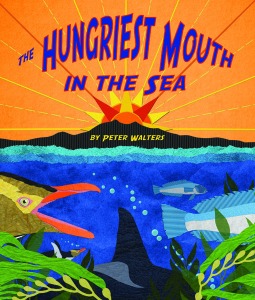 Who is the Hungriest Mouth in the Seas of the South? Where is the Seas of the South located? Find out in our For Creative Minds section linked below, but first meet the creator behind this fun and colorful book!
Who is the Hungriest Mouth in the Seas of the South? Where is the Seas of the South located? Find out in our For Creative Minds section linked below, but first meet the creator behind this fun and colorful book!
 Peter Walters lives in Cornwall England, but has traveled all over the world as an educator. He has helped children write their own picture books, but this is the first published picture book of his own. Find out what inspired Peter’s book and his art…
Peter Walters lives in Cornwall England, but has traveled all over the world as an educator. He has helped children write their own picture books, but this is the first published picture book of his own. Find out what inspired Peter’s book and his art…
What was your incentive to write this particular book?
I can quite vividly picture where the journey of this book began. I was sitting on sandy dunes in Otago, NZ watching two brave yellow-eyed penguins scamper past a snoozing fur seal to a rocky alcove. I felt then that the richness of the environment and web of predators and prey was so detailed; that I believed it could so effectively engage with a child’s curiosity.
How has teaching children all over the world influenced your writing?
I am fortunate that my work with children has exposed me to a variety of cultures and it has always been fascinating to observe the role of the child and the attitude towards childhood wherever I have been. While I have seen many differences between cultures I have also witnessed traits that appear universal and I am certain the relationship children have with storytelling is one such trait. One other direct influence on my writing for children is their interaction and interest in the natural world. We of course, as a species, have an intimate relationship with nature and while the modern world increasingly obstructs the time children have to cultivate this relationship, the deep-routed curiosity that an image of a lion, eagle or dolphin generates still remains.
Learn more about Peter in his full author interview here, or dive into the For Creative Minds section to learn more about this wild habitat!
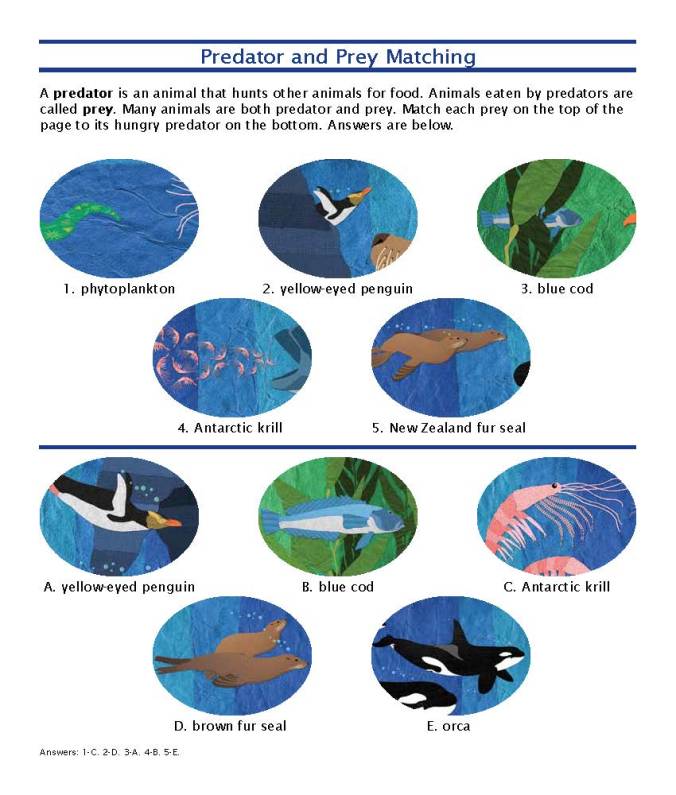
Leave a comment and enter to win a copy of The Hungriest Mouth in the Sea!


By: Arbordale Publishing,
on 9/11/2015
Blog:
(
Login to Add to MyJacketFlap)
JacketFlap tags:
new book,
giveaway,
Book Launches,
Reptiles,
Amphibians,
Venn diagram,
teaching activities,
Arbordale Posts,
Compare and Contrast Book,
Katharine Hall,
Add a tag
 With three books under her belt in the past two years, author Katharine Hall is ready to compare and contrast again with Amphibians and Reptiles. This is the fourth book in our popular series and like the other books in the Compare and Contrast Book series young children will learn a ton of facts and get an up-close look at these slimy or scaly creatures.
With three books under her belt in the past two years, author Katharine Hall is ready to compare and contrast again with Amphibians and Reptiles. This is the fourth book in our popular series and like the other books in the Compare and Contrast Book series young children will learn a ton of facts and get an up-close look at these slimy or scaly creatures.
 Some of the most common questions we get from readers are about coming up with book ideas. Get to know Katharine and her writing…
Some of the most common questions we get from readers are about coming up with book ideas. Get to know Katharine and her writing…
How have you decided what topics to write about in the series?
I started with Polar Bears and Penguins because so many kids – and even adults! – think that these animals inhabit the same area. So I really wanted to pull them apart and say, no, this is where polar bears are and this is where penguins are, and they are completely different regions. So comparing/ contrasting two groups that are frequently confused is a fun topic and probably my favorite approach. But there are also things that are around us all the time that we don’t necessarily think about or examine. Those make great topics because they involve exploring something familiar and learning new things.
As an avid reader, what were some of your favorite books as a child?
How long of a list do you want? I could go on forever, but I’ll try to limit myself here. When I was little-little, I loved the “Baby Blue Cat” books and anything/everything by Jan Brett. Then by elementary school, I basically read everything and anything I could get my hands on. In terms of non-fiction, I have always enjoyed biographies. My mom stocked our bookshelves with biographies of famous women in history, famous inventors, scientists, and mathematicians – books that introduced me to important people and moments in history and helped expand my understanding of the world. For fiction, the “Harry Potter” series by JK Rowling and the “Song of the Lioness” series by Tamora Pierce were – and still are – near and dear to my heart.
Find out what author Katharine Hall has coming up next in her full author interview!
 Ready to compare and contrast Amphibians and Reptiles? Leave a comment and enter to win a copy of the new book, then get started with our Venn diagram!
Ready to compare and contrast Amphibians and Reptiles? Leave a comment and enter to win a copy of the new book, then get started with our Venn diagram!


By: Arbordale Publishing,
on 9/10/2015
Blog:
(
Login to Add to MyJacketFlap)
JacketFlap tags:
amphibians & reptiles,
arbordale announcement,
hungriest mouth,
sounds savanna,
sparrow trees,
they just know,
tortoise and hare,
new books,
Book Launches,
book launch,
Add a tag
Time for pumpkin spice, changing leaves, chilly air and curling up with a good book! Well you’re in luck we are launching seven new books this week perfect for the changing season!
Get to know each book and author throughout the week with profiles, giveaways and author interviews. But first we will kick off the celebration today with an introduction to the seven new titles!
Amphibians & Reptiles
 What makes a frog an amphibian but a snake a reptile? Both classes may lay eggs, but they have different skin coverings and breathe in different ways. Pages of fun facts will help kids identify each animal in the class like a pro after reading the fourth book in Arbordale’s Compare and Contrast series. Similar to Polar Bears and Penguins, Clouds and Trees; Amphibians and Reptiles uses stunning photographs and simple non-fiction text to get kids thinking about the similarities and differences between these two animal classes.
What makes a frog an amphibian but a snake a reptile? Both classes may lay eggs, but they have different skin coverings and breathe in different ways. Pages of fun facts will help kids identify each animal in the class like a pro after reading the fourth book in Arbordale’s Compare and Contrast series. Similar to Polar Bears and Penguins, Clouds and Trees; Amphibians and Reptiles uses stunning photographs and simple non-fiction text to get kids thinking about the similarities and differences between these two animal classes.
Get to know the author
The Hungriest Mouth in the Sea
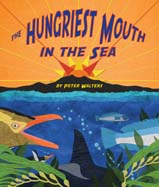 The animals of the South Sea are hungry. But who is hungrier than all of the rest? The kicking krill may swarm and the blue cod are out hunting for dinner, but neither is fierce enough to be tops in this habitat. Could it be the lurking sharks, pointy-tailed rays or the toothy barracuda? Dive into this rhythmic text to discover who is at the top of this food chain.
The animals of the South Sea are hungry. But who is hungrier than all of the rest? The kicking krill may swarm and the blue cod are out hunting for dinner, but neither is fierce enough to be tops in this habitat. Could it be the lurking sharks, pointy-tailed rays or the toothy barracuda? Dive into this rhythmic text to discover who is at the top of this food chain.
Get to know the hungriest mouth on Instagram
The Lucky Litter: Wolf Pups Rescued from Wildfire
 As a huge wildfire roared along the Funny River in the Kenai National Wildlife Refuge in Alaska, firefighters rushed to the rescue. When they found five three-week-old wolf pups in need, they raced into action to save the whole litter. With no wolf parents to help, zookeepers and vets at the Alaska Zoo made sure the babies grew into a healthy, happy pack. Follow this true story as the pups travel from their charred forest to the Alaska Zoo, where they grow big and strong before finally moving to their forever home at the Minnesota Zoo.
As a huge wildfire roared along the Funny River in the Kenai National Wildlife Refuge in Alaska, firefighters rushed to the rescue. When they found five three-week-old wolf pups in need, they raced into action to save the whole litter. With no wolf parents to help, zookeepers and vets at the Alaska Zoo made sure the babies grew into a healthy, happy pack. Follow this true story as the pups travel from their charred forest to the Alaska Zoo, where they grow big and strong before finally moving to their forever home at the Minnesota Zoo.
Get to know the author @MySaymag And the photographer
Sounds of the Savanna
 From the first light of dawn until the sun sets at night, the savanna is alive with noise. A lion roars in the early morning, a young baboon shrieks at noon, and a young mouse squeals at dusk. What are the animals saying and why? Animals communicate in many ways; explore the thriving African savanna as its inhabitants “talk” to one another throughout the course of a day.
From the first light of dawn until the sun sets at night, the savanna is alive with noise. A lion roars in the early morning, a young baboon shrieks at noon, and a young mouse squeals at dusk. What are the animals saying and why? Animals communicate in many ways; explore the thriving African savanna as its inhabitants “talk” to one another throughout the course of a day.
Get to know the author and the illustrator
The Sparrow and the Trees
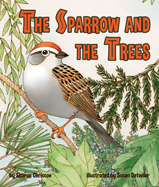 The Sparrow family is ready for their trip south for the winter, but Papa’s wing is hurt and he cannot make the trip. He asks the trees for help. One by one, the mighty, leafy trees of the forest say no! Will any of the trees help Papa Sparrow? What will happen to the selfish trees that turned him away? Discover why some trees lose their leaves in winter in this retelling of a Cherokee pourquoi tale.
The Sparrow family is ready for their trip south for the winter, but Papa’s wing is hurt and he cannot make the trip. He asks the trees for help. One by one, the mighty, leafy trees of the forest say no! Will any of the trees help Papa Sparrow? What will happen to the selfish trees that turned him away? Discover why some trees lose their leaves in winter in this retelling of a Cherokee pourquoi tale.
Get to know the author @schriscoe_ and the illustrator
They Just Know: Animal Instincts
 How do some young animals know what to do and how to do it? Does someone teach a caterpillar what to eat? Who gives a baby shark swimming lessons? Sometimes young animals learn things from their parents, but other times… they just know! Explore animal instincts through engaging text and fanciful illustrations.
How do some young animals know what to do and how to do it? Does someone teach a caterpillar what to eat? Who gives a baby shark swimming lessons? Sometimes young animals learn things from their parents, but other times… they just know! Explore animal instincts through engaging text and fanciful illustrations.
Get to know the author @RobinEggWrites and the illustrator
Tortoise and Hare’s Amazing Race
 A retelling of the classic story with a math twist. Henry Hare was always bragging about how fast he was. One day he challenges Tessie Tortoise to a mile-long race up the hill. Henry leaps ahead for the first eighth of a mile. As Tessie approaches, he bounds ahead again. Fractions and distance measurements mark their progress as Tessie and Henry race to the finish line.
A retelling of the classic story with a math twist. Henry Hare was always bragging about how fast he was. One day he challenges Tessie Tortoise to a mile-long race up the hill. Henry leaps ahead for the first eighth of a mile. As Tessie approaches, he bounds ahead again. Fractions and distance measurements mark their progress as Tessie and Henry race to the finish line.
Get to know the author and the illustrator @Cathy_Morrison
Stay with us all week and enter to win each of these books! Also check out our Twitter, Facebook and Pinterest for crafts and activities, author events and more!!


By: Arbordale Publishing,
on 7/31/2015
Blog:
(
Login to Add to MyJacketFlap)
JacketFlap tags:
Arbordale Posts,
Add a tag
We have had a busy year so far we have released 15 books and we have seven more on the way. We appreciate all the comments from editors, reporters and bloggers. I have shared a few favorites here, enjoy!
 Feathered Quill Book Reviews
Feathered Quill Book Reviews
“This is a fun book that will teach young children about pollen and why we need it. Of course many children who are allergic to some forms of pollen might not find it useful, but they will adore Baby Bear. He sneezes here and there throughout this highly informative book, one that makes it easy for children to understand the pollination process. The artwork is fun, vibrant and the picture book format makes it easy for even the most reluctant reader to learn some very interesting facts.”
 NSTA Recommends
NSTA Recommends
“Teachers and their young students will eat this book right up! It offers K-3 students a unique and exciting opportunity to get an up close and personal view of the many types of animal mouths in nature. It stands out among other books of its type because of the stunning photographs and interesting descriptive text that conveys content information about the structure and function of animals’ mouths.”
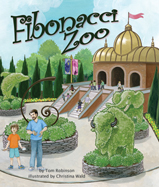 Outnumbered 3 to 1
Outnumbered 3 to 1
“This book is absolutely fantastic at teaching the basics of Fibonacci’s sequence to younger kids. So well laid out and with the perfect illustrations to accompany it. My oldest has always had a thing for math and she thinks this book is “so cool I can’t believe I’m learning this.”
 Goodreads Review
Goodreads Review
“Readers will quickly realize just how intelligent primates are and how they can grow bored easily with nothing to do. The photographs from various zoos in the United States feature some primates such as the golden lion tamarin and the white-cheeked gibbon that I have not often seen featured in nature books before. There are many shots of the animals and the zoo keepers hard at work–or play, depending on one’s perspective.”
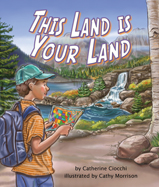 ACS Readers Haven
ACS Readers Haven
Catherine Ciocchi has written in rhyming cadence a sweet and simple geography lesson. Kids won’t even realize that they have just had a lesson in geography. This is educational entertainment done well.
 Literary Classics
Literary Classics
“This is a lovely book which incorporates learning about the Woolly Mammoth while teaching an understanding of the importance of staying close to an adult for safety’s sake. Gabriel has skillfully blended fact and fiction in this book which young boys and girls are sure to connect with on many levels. This book is highly recommended for home and school libraries and for classroom reading.”
Read more reviews by visiting each book’s homepage, and check out our upcoming books ready for reviewing this fall!
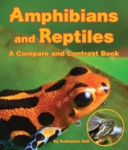
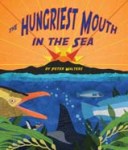
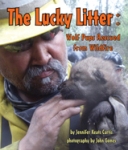

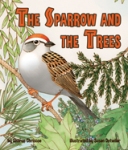

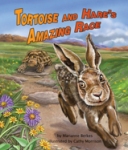
If you would like to review an Arbordale book for your blog or magazine please leave a note in the comments.


By: Arbordale Publishing,
on 7/8/2015
Blog:
(
Login to Add to MyJacketFlap)
JacketFlap tags:
Featured Books,
arbordale books,
Catherine Ciocchi,
landforms,
peninsulas,
Children's Books,
travel,
kids books,
Educational,
mountains,
plains,
islands,
this land is your land,
valleys,
volcanoes,
Add a tag
Are you looking for a fun family trip this summer? Don’t want to travel too far from home? This Land Is Your Land talks about many different landforms all over the United States. Read this book with your children to teach them about the diverse landscapes of our beautiful country, then pack up the car and head to the nearest (or farthest!) destination. Who says education has to stop in the summer?
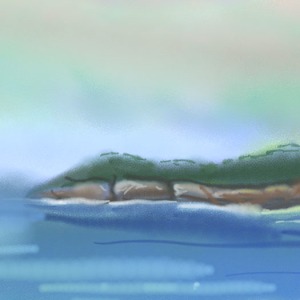 Coastlines: Perhaps the easiest landform to reach for many, the United States coastline is over 95,000 miles long. Many people live on the coast – about 39% of the country’s population! The coast is a very popular tourist destination, and there are hundreds of beaches for people to travel to. Some of the best family beaches are located in the Outer Banks in North Carolina; Maui, Hawaii; Myrtle Beach, South Carolina; Destin, Florida; San Diego, California; and Ocean City, Maryland. There are beaches in every coastal state, though. Which beach is closest to you?
Coastlines: Perhaps the easiest landform to reach for many, the United States coastline is over 95,000 miles long. Many people live on the coast – about 39% of the country’s population! The coast is a very popular tourist destination, and there are hundreds of beaches for people to travel to. Some of the best family beaches are located in the Outer Banks in North Carolina; Maui, Hawaii; Myrtle Beach, South Carolina; Destin, Florida; San Diego, California; and Ocean City, Maryland. There are beaches in every coastal state, though. Which beach is closest to you?
Mountains and hills: Mountains are also another popular place for tourists, especially those who enjoy activities such as hiking and  camping. Some states have more to offer than others when it comes to mountains. For example, the highest point in Florida is only 345 feet above sea level, whereas Alaska’s Mt. McKinley towers 20,320 feet above sea level. However, all 50 states have some sort of forest, lake, or other natural area where camping and nature walks are possible, so even those of you in the flatter states don’t have to miss out!
camping. Some states have more to offer than others when it comes to mountains. For example, the highest point in Florida is only 345 feet above sea level, whereas Alaska’s Mt. McKinley towers 20,320 feet above sea level. However, all 50 states have some sort of forest, lake, or other natural area where camping and nature walks are possible, so even those of you in the flatter states don’t have to miss out!
Plateaus and canyons: In the United States, plateaus are found mainly in the western states, where the Colorado Plateau is. Plateaus provide opportunities for hiking and climbing, and the Colorado Plateau contains the famous Colorado River and Grand Canyon. Many national parks are also in this area, including Zion and Mesa Verde, where you can find smaller plateaus and canyons.
Valleys: A valley is simply a place between mountains or hills, so even states such as Kansas, with very few hills, have some areas that lie lower than others. Beautiful valleys in the United States include the Sedona Verde Valley in Arizona, Napa Valley in California, the Waipi’o Valley in Hawaii, and the Shenandoah Valley in Virginia.
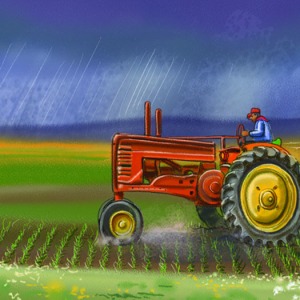 Plains: The plain region of the United States is called the Great Plains, which runs from Texas north to Oklahoma, Kansas, Nebraska, the Dakotas, and eastern Montana. The Great Plains are known for their extensive flat lands covered in tall grass, cattle ranches, and bison. Be careful here in the spring and summer – the Great Plains are located in Tornado Alley, where tornadoes happen most frequently!
Plains: The plain region of the United States is called the Great Plains, which runs from Texas north to Oklahoma, Kansas, Nebraska, the Dakotas, and eastern Montana. The Great Plains are known for their extensive flat lands covered in tall grass, cattle ranches, and bison. Be careful here in the spring and summer – the Great Plains are located in Tornado Alley, where tornadoes happen most frequently!
Peninsulas: Arbordale Publishing is located near a well-known peninsula –Charleston, South Carolina! Many of the first towns settled in the United States are located on peninsulas, as they provide easy access by water to ships delivering people and supplies. Jamestown, Virginia and Boston, Massachusetts were first built on peninsulas. The entire state of Florida is a big peninsula!
Volcanoes: The west coast of the United States is located in what is 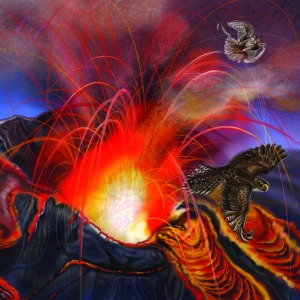 known as the “Ring of Fire,” an area where many volcanic eruptions and earthquakes occur due to the movement of the Earth’s tectonic plates. Active, potentially dangerous volcanoes in the United States include Kilauea Volcano in Hawaii, Mount St. Helens in Washington, Mount Hood in Oregon, Mount Shasta in California. While some of these volcanoes haven’t erupted in years, they are not considered dormant, meaning they could erupt at any time. A volcanic eruption would be an exciting sight to see, but be sure to keep your distance!
known as the “Ring of Fire,” an area where many volcanic eruptions and earthquakes occur due to the movement of the Earth’s tectonic plates. Active, potentially dangerous volcanoes in the United States include Kilauea Volcano in Hawaii, Mount St. Helens in Washington, Mount Hood in Oregon, Mount Shasta in California. While some of these volcanoes haven’t erupted in years, they are not considered dormant, meaning they could erupt at any time. A volcanic eruption would be an exciting sight to see, but be sure to keep your distance!
Islands and archipelagos: The most famous example of an island chain in the United States is Hawaii. Another is the Aleutian Islands in  Alaska. Since neither of these are especially accessible to the average Mackinac, Michigan; Whidbey Island, Washington; Mount Desert, Maine; Amelia Island, Florida; and Assateague Island, Virginia. Did you know that part of the biggest city in the United States is located on an island? Manhattan is surrounded by the Hudson River, the East River, and the Harlem River!
Alaska. Since neither of these are especially accessible to the average Mackinac, Michigan; Whidbey Island, Washington; Mount Desert, Maine; Amelia Island, Florida; and Assateague Island, Virginia. Did you know that part of the biggest city in the United States is located on an island? Manhattan is surrounded by the Hudson River, the East River, and the Harlem River!
Learn more about these landforms in Catherine Ciocchi’s book This Land is Your Land!



 Going into this summer, I did not have much of an idea of what I wanted to do with my life. As a rising senior English major at Washington & Lee University, I knew I had options, but having too many options gives me a headache, so I tended to push them all to the side and ignore the looming presence of adulthood. After a month of interning here at Arbordale Publishing, I am still at a loss as to what I want to do with my future, but now it’s not because I haven’t thought about it – it’s because I love everything I have been exposed to here!
Going into this summer, I did not have much of an idea of what I wanted to do with my life. As a rising senior English major at Washington & Lee University, I knew I had options, but having too many options gives me a headache, so I tended to push them all to the side and ignore the looming presence of adulthood. After a month of interning here at Arbordale Publishing, I am still at a loss as to what I want to do with my future, but now it’s not because I haven’t thought about it – it’s because I love everything I have been exposed to here!
I have always loved books. I could read my collection of Dr. Seuss books alone by the age of three, devoured the first Harry Potter book in kindergarten, and tried my hand at writing a few (now embarrassing) short stories throughout my elementary school years. Imagine my delight when I eventually discovered that there is a whole industry dedicated to reading, editing, and publishing new books! I started looking more deeply into the publishing industry during high school, and entered college knowing I wanted to be an English major. When I got the opportunity to intern at Arbordale Publishing this summer, I was excited to be one step closer to a job I have dreamed about for years.
Working with children’s books for the past month has been a fun summer activity, as well as a great introduction into the world of publishing. I have done everything from the typical reading submitted manuscripts and editing those that are accepted to the more creative designing activities in the books’ For Creative Minds sections and choosing photographs to go into a book currently in production. I have seen the schedule of a book’s journey from manuscript submission to eBook design to final printing, and learned of the hundreds of tiny steps that must happen in between to make for a successful story. More recently, I have witnessed all the work that goes into the publicity side of things, from getting stories reviewed to working with authors as they attend events to promote their book. Even with children’s books, the amount of work is no joke!
Thankfully, I have one more year to figure out what I’m going to be when I grow up. Do I want to go into editing or publicity? Should I write on the side? What am I going to enjoy the most? I am grateful to be here at Arbordale Publishing this summer, where I can explore so many different options and decide which aspect of publishing fits me best. Working with children’s books has been a wonderful way to learn the basics of story editing, fact checking, and appealing to specific markets without being overwhelmed by lengthy novels or heavy facts. Will I eventually wander into the world of books for adults? Probably, but this internship is the ideal jumping-off point for that journey. Now I just have to figure out where it’s going to take me.
–Cara Scott, Intern


By: Arbordale Publishing,
on 6/18/2015
Blog:
(
Login to Add to MyJacketFlap)
JacketFlap tags:
butterflies,
Bats,
nature books,
honeybees,
pollen,
Special Days,
pollinators,
Achoo,
Arbordale Posts,
arbordale books,
pollinator books,
pollinator week,
special days of the year,
Add a tag
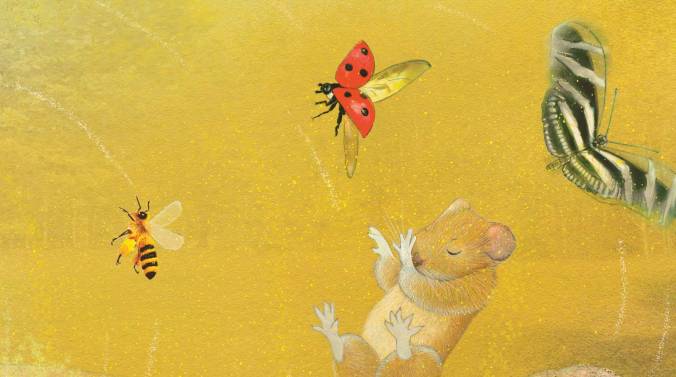 Where would the world be, if Baby Bear’s wish came true and all the pollen was to disappear? Well, many of his forest friends would be without food, and the bees and butterflies would have no reason to hop from flower to flower. That is why this week is pollinator week!
Where would the world be, if Baby Bear’s wish came true and all the pollen was to disappear? Well, many of his forest friends would be without food, and the bees and butterflies would have no reason to hop from flower to flower. That is why this week is pollinator week!
Why do we celebrate pollinators? These insects and animals are a vital part of our shaping our diet. Without pollinators many of the fruits and vegetables that we eat would not grow, not to mention… honey! The services of pollinators cannot be easily replicated by human farming practices and some plants, like almonds which are entirely dependent on honeybees would not be around anymore for us to enjoy.
In recent history, scientists have seen a drastic decline in the numbers of honeybees, monarchs and bats. Each of these species plays an important role in our lives. Whether it is the pollination of flowers by the monarch, bananas by bats, or blueberries by honeybees, humans are very reliant on pollinators and there are many things we can do to conserve these important creatures.
On Friday June 19th the Pollinator Week Festival is being held by the USDA on 12th Street in Washington DC! If you can’t make it to the nation’s capital, but would like to learn more, visit the pollinator site, and also read a few of Arbordale’s books about pollinators.


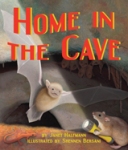
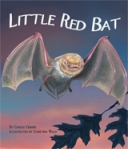


By: Arbordale Publishing,
on 6/9/2015
Blog:
(
Login to Add to MyJacketFlap)
JacketFlap tags:
author talk,
orangutan,
Featured Books,
animal ethology,
arbordale books,
Primate school,
reserch,
Children's Books,
writing,
Educational,
Add a tag
 Have you ever wondered what sparks an idea for a book?
Have you ever wondered what sparks an idea for a book?
Author Jennifer Keats Curtis talks with us about the process of writing Primate School and how one idea lead her to a deep study in animal behavior, feelings and thinking.
When I learned that orangutans were using iPads, my first thought was, Oh good, there’s hope for my mother. Ok, I’m kidding. My real thought was that despite extraordinary study and learning, there is so much about animals that we still don’t know.
As I set off to learn about orangutans and other primates for the nonfiction Primate School, I thought about how much I  love animals and want to understand them. I thought about my own connections with animals and my personal belief that animals have feelings and emotions. I believe that they feel joy and sadness, perhaps not in the same way that we do, but that they are conscious, sentient beings and I wish I could better relate and communicate with them. I think that we have missed a lot with animals in the past for fear of anthropomorphizing them.
love animals and want to understand them. I thought about my own connections with animals and my personal belief that animals have feelings and emotions. I believe that they feel joy and sadness, perhaps not in the same way that we do, but that they are conscious, sentient beings and I wish I could better relate and communicate with them. I think that we have missed a lot with animals in the past for fear of anthropomorphizing them.
I joyfully learned about how primates communicate with each other through verbal cues and behavior and how they express themselves, show happiness and love, and learn from each other and keepers. I loved learning about how primates connect to each other and to humans. I was fascinated to learn about aunting behavior among langurs and saddened to learn about the gibbons who had been raised as pets and had trouble relating to other gibbons.
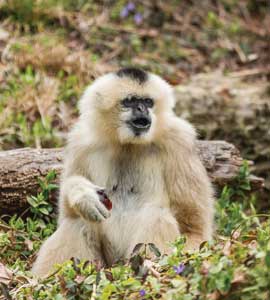 I wrote Primate School ecstatic to use what I’d learned from cognitive ethologists. Ethologists study animals in their natural settings and cognitive ethologists get to focus on the thinking process, including communication, culture, and learning. I embrace this concept and cannot get enough of what these scientists have to say. Even though that book is complete, I never want to stop learning about what primates and other animals think and feel, how they learn from us, and how we can learn from them. That is one of the main reasons that I write about animals for children.
I wrote Primate School ecstatic to use what I’d learned from cognitive ethologists. Ethologists study animals in their natural settings and cognitive ethologists get to focus on the thinking process, including communication, culture, and learning. I embrace this concept and cannot get enough of what these scientists have to say. Even though that book is complete, I never want to stop learning about what primates and other animals think and feel, how they learn from us, and how we can learn from them. That is one of the main reasons that I write about animals for children.
Award-winning nature author Jennifer Keats Curtis is frequently found among students and teachers, talking about literacy or conservation. In addition to Primate School, Salamander Season, the Animal Helpers series, Baby Owl’s Rescue, Kali’s Story, and Turtles In My Sandbox for Arbordale, some of her other recent titles include Osprey Adventure, Saving Squeak: A River Otter’s Tale, and Seahorses. Jennifer resides in Maryland, with her family and a wide variety of pets. Visit her website at www.jenniferkeatscurtis.com.
Learn more about Primate School and Jennifer’s other Arbordale books here!


By: Arbordale Publishing,
on 6/4/2015
Blog:
(
Login to Add to MyJacketFlap)
JacketFlap tags:
Children's Books,
kids books,
oceans,
Special Days,
marine life,
world oceans day,
Arbordale Posts,
activities for reading,
ocean crafts for kids,
Add a tag
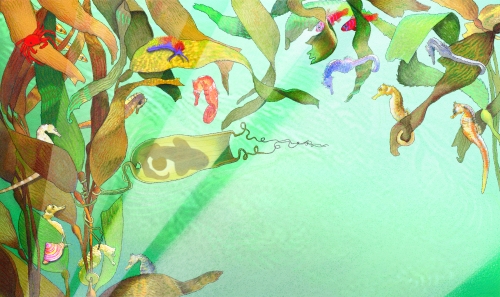
June 8th is World Ocean’s Day and a day to celebrate the vast bodies of water and their inhabitants. Museums, aquariums and zoos will hold celebrations this weekend across the country. If you are lucky enough to live on the coast, a trip to the beach is a great way to celebrate this year’s theme “Healthy oceans, healthy planet”.
Of course Arbordale has many books that celebrate the ocean and many online activities that can be done right at home. So today on the blog we have a few fun ways to honor the ocean without leaving the comforts of your own home.
Draw your own Marine Mammal
from Waterbed:s Sleeping in the Ocean
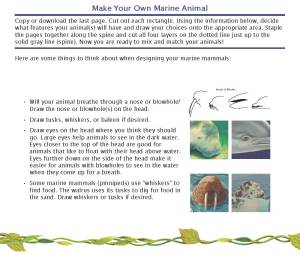
Toothy Sharks
read: Shark Baby

Find more fun activities on the Marine Life Pinterest Board, or learn more about World Oceans Day!


By: Arbordale Publishing,
on 5/29/2015
Blog:
(
Login to Add to MyJacketFlap)
JacketFlap tags:
day in the deep,
light adaptations,
ocean hide and seek,
animals,
science books,
Educational,
octopus,
octavia,
Featured Books,
Science and World News,
science news,
Add a tag

One amazingly interesting creature is the octopus; this cephalopod can twist and turn its body into many shapes, suction to all types of surfaces, and use a cloud of ink to distract predators. This week, researchers uncovered the California two-spot octopus’s ability to sense light through its skin.
When the scientist shone a beam of light on the skin of an octopus the chromatophores (pigmented structures in the skin) expanded and the skin changed color. When the light was turned off, the chromatophores contracted again and the octopus was back to its original color. Why does this happen? Scientists determined that the octopus’ skin has proteins called opsins that work with the chromatophores for this reaction to occur.
(Read more about the experiments here)
Changing colors is nothing new in the octopus species; they can become red with anger, or transparent in sunlight. The more tools the creature has to camouflage itself the better chance for survival in the wild depths of the ocean where predators are abundant.
To learn more about the octopus or how other animals use light in the depths of the ocean here is a short underwater reading list!
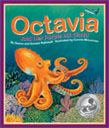
Octavia and her Purple Ink Cloud
Octavia Octopus and her sea-animal friends love playing camouflage games to practice how they would hide from a “big, hungry creature.” Octavia, however, just cannot seem to get her colors right when she tries to shoot her purple ink cloud. What happens when the big, hungry shark shows up looking for his dinner? This creative book introduces basic colors along with the camouflage techniques of various sea animals; a great introduction to marine biology!
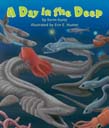 A Day in the Deep
A Day in the Deep
Travel deep into the ocean way below the surface and you’ll encounter some creatures you never knew existed! This book takes you on a journey through the dark depths of the sea towards the ocean floor. Most ecosystems need sunlight, but deep in the ocean where the sun doesn’t shine animals have adapted some very interesting ways to see, protect themselves, and eat. Discover the unique habitats, adaptations, and food chains of these deep -sea creatures.
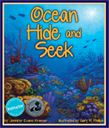 Ocean Hide and Seek
Ocean Hide and Seek
The sea is a place of mystery, where animals big and small play hide and seek! Can you imagine a shark hiding in the light? What about a clownfish in plain sight? Don’t believe it? Then, sink into the deep blue sea with Jennifer Evans Kramer and Ocean Hide and Seek! Surround yourself with the vibrant ocean illustrations of Gary R. Phillips. The ocean is an old, old place, and the exotic animals in the depths have learned to adapt to their surroundings to survive. Can you find the creatures hidden on every page? Or will you, too, be fooled by an ancient, underwater disguise?


By: Arbordale Publishing,
on 5/8/2015
Blog:
(
Login to Add to MyJacketFlap)
JacketFlap tags:
Children's Books,
kidlit,
book giveaway,
Book Launches,
this land is your land,
Achoo,
Animal mouths,
CBW15,
children's book week 15,
fibonacci zoo,
primate shcool,
wandering woolly,
Add a tag
By: Arbordale Publishing,
on 5/5/2015
Blog:
(
Login to Add to MyJacketFlap)
JacketFlap tags:
Add a tag
 Children’s Book Week is always an exciting time to share our books with kids, our authors travel to events in their community, and we post fun activities and announce book giveaways right here. This year is extra special for us, not only are six new titles hitting shelves this week, but we have another reason to celebrate, Kali’s Story: An Orphaned Polar Bear Rescue is a winner in the Children’s Choice Book Awards.
Children’s Book Week is always an exciting time to share our books with kids, our authors travel to events in their community, and we post fun activities and announce book giveaways right here. This year is extra special for us, not only are six new titles hitting shelves this week, but we have another reason to celebrate, Kali’s Story: An Orphaned Polar Bear Rescue is a winner in the Children’s Choice Book Awards.
The announcement came late last night and we are still amazed that the only nonfiction nominee from our little office won the popular vote. Don’t get me wrong the bear as well as the book is adorable; and Jennifer Keats Curtis and John Gomes could not have captured his personality and the journey from a den in Northern Alaska to his friend at the Buffalo Zoo any better. So today we are overjoyed with the win and it is a day of celebration and would like to express our gratitude to all the little readers and voters in this year’s awards!

Join us in the celebration with polar bear paw cupcakes! https://www.pinterest.com/ArbordaleKids/polar-bears/
If you want to learn more about Kali’s Story visit the book homepage http://www.arbordalepublishing.com/bookpage.php?id=Kali


By: Arbordale Publishing,
on 4/22/2015
Blog:
(
Login to Add to MyJacketFlap)
JacketFlap tags:
Children's Books,
environment,
Earth Day,
environmental books,
Special Days,
Arbordale Booklist,
Earth Day ideas,
glacier book,
panther book,
recycle book,
Add a tag
 Did you know that the first Earth Day was on April 20, 1970?
Did you know that the first Earth Day was on April 20, 1970?
Started by Wisconsin Senator Gaylord Nelson and his small staff, the first Earth Day saw 20 million participants and has grown every year. Initially started as a day to teach the public about the condition of our environment, today this environmental movement is credited with starting the EPA, Clean Air Act, Endangered Species Act and Water Quality Improvement Act.
Forty-five years later our environmental awareness has improved and people of all ages celebrate Earth Day. Find events near you and celebration ideas on EarthDay.org!
At Arbordale, we are also passionate about the fate of the planet and our way of helping the environmental movement is to educate young children about the world around us and those living in it. Many of our books feature endangered animals or vulnerable environmental elements. In celebration of Earth Day here are three books to get a conversation started with your little ones about the environment!
Nature Recycles: How About You?
By Michele Lord, illustrated by Cathy Morrison
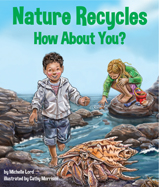 From sea urchins in the Atlantic Ocean to bandicoots on the Australian savanna, animals all over the world recycle. Explore how different animals in different habitats use recycled material to build homes, protect themselves and get food. This fascinating collection of animal facts will teach readers about the importance of recycling and inspire them to take part in protecting and conserving the environment by recycling in their own way.
From sea urchins in the Atlantic Ocean to bandicoots on the Australian savanna, animals all over the world recycle. Explore how different animals in different habitats use recycled material to build homes, protect themselves and get food. This fascinating collection of animal facts will teach readers about the importance of recycling and inspire them to take part in protecting and conserving the environment by recycling in their own way.
The Glaciers are Melting!
By Donna Love, illustrated by Shennen Bersani
 Chicken Little may have thought the sky was falling but Peter Pika is sure the glaciers are melting and is off to talk to the Mountain Monarch about it. Joined along the way by friends Tammy Ptarmigan, Sally Squirrel, Mandy Marmot, and Harry Hare, they all wonder what will happen to them if the glaciers melt. Where will they live, how will they survive? When Wiley Wolverine tries to trick them, can the Mountain Monarch save them? More importantly, can the Mountain Monarch stop the glaciers from melting?
Chicken Little may have thought the sky was falling but Peter Pika is sure the glaciers are melting and is off to talk to the Mountain Monarch about it. Joined along the way by friends Tammy Ptarmigan, Sally Squirrel, Mandy Marmot, and Harry Hare, they all wonder what will happen to them if the glaciers melt. Where will they live, how will they survive? When Wiley Wolverine tries to trick them, can the Mountain Monarch save them? More importantly, can the Mountain Monarch stop the glaciers from melting?
Felina’s New Home: A Florida Panther Story
by Loran Wlodarski illustrated by Lew Clayton
 Felina the Florida panther loved growing up in her forest home, until the forest starts to shrink! Trees begin to disappear, and Felina doesn’t understand the new busy highway in the neighborhood. Other animals are in danger, too. Will Felina find a way to survive as humans threaten to ruin her home? Environmental science writer Loran Wlodarski gives children a look into deforestation and endangered animals in Felina’s New Home: A Florida Panther Story, complemented by the detailed, emotive illustrations of Lew Clayton. Learn whether the animals in Felina’s forest adapt to the new human presence and what children can do to keep wild animals safe, happy, and healthy.
Felina the Florida panther loved growing up in her forest home, until the forest starts to shrink! Trees begin to disappear, and Felina doesn’t understand the new busy highway in the neighborhood. Other animals are in danger, too. Will Felina find a way to survive as humans threaten to ruin her home? Environmental science writer Loran Wlodarski gives children a look into deforestation and endangered animals in Felina’s New Home: A Florida Panther Story, complemented by the detailed, emotive illustrations of Lew Clayton. Learn whether the animals in Felina’s forest adapt to the new human presence and what children can do to keep wild animals safe, happy, and healthy.


Spring brings warmer weather, blooming flowers and this weekend brightly colored eggs will be hunted by families making Easter memories. I think my love and appreciation for books began with a family tradition at Easter time. My mother coveted her copy of The Tale of Peter Rabbit and each Easter she would get the old book out and read the story to us. Even as I grew up, I looked forward to that book coming out at Easter and the great memories of reading about the mischievous little rabbit.
Although the rabbits in Arbordale books don’t wear little blue jackets and sneak into gardens, you can learn a few great facts about rabbits and other animals in these books!
In My Backyard
 Baby dogs are puppies and they belong to a litter, but what is a baby skunk and what is the name of its group? This clever, rhythmic story tells us just that! Counting from one to ten, familiar backyard animals are introduced by baby and family group name. Each stanza also tells a bit more about each animal by providing clues as to what they eat, how they sound or where they live. The “For Creative Minds” section includes more animal fun facts, information on keeping a nature journal and how to watch for wildlife in your own backyard.
Baby dogs are puppies and they belong to a litter, but what is a baby skunk and what is the name of its group? This clever, rhythmic story tells us just that! Counting from one to ten, familiar backyard animals are introduced by baby and family group name. Each stanza also tells a bit more about each animal by providing clues as to what they eat, how they sound or where they live. The “For Creative Minds” section includes more animal fun facts, information on keeping a nature journal and how to watch for wildlife in your own backyard.
Habitat Spy
 Let’s spy on plants, insects, birds, and mammals in 13 different habitats. Told in rhyming narrative, Habitat Spy invites children to search for and find plants, invertebrates, birds, and mammals and more that live in 13 different habitats: backyard, beach, bog, cave, desert, forest, meadow, mountain, ocean, plains, pond, river, and cypress swamp. Children will spend hours looking for and counting all the different plants and animals while learning about what living things need to survive.
Let’s spy on plants, insects, birds, and mammals in 13 different habitats. Told in rhyming narrative, Habitat Spy invites children to search for and find plants, invertebrates, birds, and mammals and more that live in 13 different habitats: backyard, beach, bog, cave, desert, forest, meadow, mountain, ocean, plains, pond, river, and cypress swamp. Children will spend hours looking for and counting all the different plants and animals while learning about what living things need to survive.
Little Skink’s Tail
 While Little Skink hunts yummy ants for breakfast, she is suddenly attacked by a crow! But she has a trick to escape she snaps off her tail, and it keeps on wiggling! Little Skink is happy to be alive, but she misses her bright blue tail. Little Skink’s Tail follows Little Skink as she daydreams of having the tails of other animals in the forest. Readers will enjoy pretending with her, trying on tail after tail. The first is too puffy-fluffy, and another too stinky! Then one day Little Skink gets a big surprise and she doesn’t have to dream of tails anymore. The “For Creative Minds” section has information on tail adaptations and communications and a mix-and-match tail activity.
While Little Skink hunts yummy ants for breakfast, she is suddenly attacked by a crow! But she has a trick to escape she snaps off her tail, and it keeps on wiggling! Little Skink is happy to be alive, but she misses her bright blue tail. Little Skink’s Tail follows Little Skink as she daydreams of having the tails of other animals in the forest. Readers will enjoy pretending with her, trying on tail after tail. The first is too puffy-fluffy, and another too stinky! Then one day Little Skink gets a big surprise and she doesn’t have to dream of tails anymore. The “For Creative Minds” section has information on tail adaptations and communications and a mix-and-match tail activity.
Animalogy
 Compare and contrast different animals through predictable, rhyming analogies. Find the similarities between even the most incompatible animals . . . bat is to flit as eagle is to soar; dog is to bark as lion is to roar. Comparisons include sounds, physical adaptations, behaviors, and animals classes and are so fun, readers learn without even realizing it! Animals are to nature, as Animalogy is to fun!
Compare and contrast different animals through predictable, rhyming analogies. Find the similarities between even the most incompatible animals . . . bat is to flit as eagle is to soar; dog is to bark as lion is to roar. Comparisons include sounds, physical adaptations, behaviors, and animals classes and are so fun, readers learn without even realizing it! Animals are to nature, as Animalogy is to fun!
Happy Spring Reading
-Heather Williams
Public Relations Manager


By: Arbordale Publishing,
on 3/27/2015
Blog:
(
Login to Add to MyJacketFlap)
JacketFlap tags:
shape family,
science,
study,
reading,
Book Giveaway,
neuroscience,
Friday Reads,
Science and World News,
animal partners,
daisylocks,
Add a tag
In a recent neuroscience study, researchers focused on the visual side of the brain and concluded that volunteers saw words and pictures and not individual letters. This research could prove very helpful in understanding how struggling readers process words, and improve tactics for teaching.
Arbordale truly believes that reading, and being read to, is a very important part of growing up. So, we are closing out the work with a Friday Reads Giveaway! Comment on this post to be entered to win these three Arbordale books!
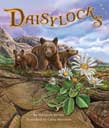
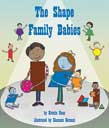

Learn more about the Journal of Neuroscience article on Science News.


By: Arbordale Publishing,
on 3/19/2015
Blog:
(
Login to Add to MyJacketFlap)
JacketFlap tags:
book awards,
Polar Bears,
children's book week,
children's choice,
zoo animals,
Award Winners!,
Featured Books,
kali's story,
vote polar bear,
voting open,
Children's Books,
Add a tag
 It is such an honor to have Kali’s Story: An Orphaned Polar Bear Rescue selected as a finalist for the CBC Children’s Choice Awards! But kids, now we need your help!
It is such an honor to have Kali’s Story: An Orphaned Polar Bear Rescue selected as a finalist for the CBC Children’s Choice Awards! But kids, now we need your help!
Vote for Kali!!
//www.dogobooks.com/polls/3-4th-gr-book-of-the-year-2015/iframe


3.141592653

Not only is today PI day and the celebration of the ratio used to calculate a circle’s circumference or diameter, this PI Day has a special significance. Set your clocks and experience a moment that only happens every 100 years.
On 3/14/15 at 9:26:53 the country will experience a pi second where the first ten digits of pi line up perfectly with the time. A statistician in Toronto has even calculated the pi instant where all the digits of pi line up exactly with time.
So to commemorate this special event we are making a blackberry pie, and reading Blackberry Banquet!
If you would like to do the same here is a recipe from Allrecipes.com
4 cups of blackberries
½ cup of white sugar
½ cup all-purpose flour
9 inch double pie crust (store bought) or recipe
2 tablespoons milk
¼ cup white sugar
Directions
- Preheat oven to 425 degrees F (220 degrees C).
- Combine 3 1/2 cups berries with the sugar and flour. Spoon the mixture into an unbaked pie shell. Spread the remaining 1/2 cup berries on top of the sweetened berries, and cover with the top crust. Seal and crimp the edges, and cut vents in the top crust for steam to escape.
- Brush the top crust with milk, and sprinkle with 1/4 cup sugar.
- Bake in the preheated oven for 15 minutes. Reduce the temperature of the oven to 375 degrees F (190 degrees C), and bake for an additional 20 to 25 minutes, or until the filling is bubbly and the crust is golden brown. Cool on wire rack.

And read Blackberry Banquet with us today for FREE online!


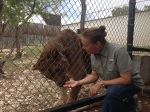
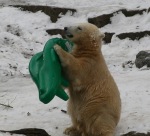




The pet industry is a billion dollar business and many Americans share homes with four-legged friends, or aquatic creatures. Each day people are taking care of their animals and enriching their lives just like the people featured in the Animal Helpers series.
In a recent interview, Author Jennifer Keats Curtis shared with Arbordale how zookeepers and rehabilitators have influenced her interactions with her own dog. Just like animals in zoos, pets need enrichment. Even the smallest fish can be trained.
So, here are a few training experiments that you can do at home to enrich the lives of your pets.
Dogs
Your dog might have hi-five down or may love a game of fetch, but what about when you are away?
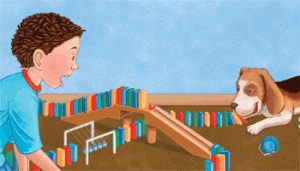 Play a game of find and seek with treats or even your dog’s food. When you dog is in another room place small treats or a little food in simple hiding spaces around a room. Have your dog use it’s nose to seek out the food. For the first few times you may have to help your dog out, but they will quickly get the hint.
Play a game of find and seek with treats or even your dog’s food. When you dog is in another room place small treats or a little food in simple hiding spaces around a room. Have your dog use it’s nose to seek out the food. For the first few times you may have to help your dog out, but they will quickly get the hint.
Take learning one step further with puzzles. Many local pet stores carry treat puzzles where dogs must use their nose to get the reward. This enrichment will entertain and tire out your pooch!
Cats
Cats may be a little harder to please, but they are easily trainable too! A happy cat has many toys to bat around, or even a 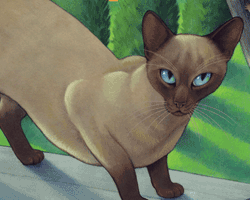 fishing pole with a furry ball at the end can entertain a cat for hours, but many people have trained their cat to do much more.
fishing pole with a furry ball at the end can entertain a cat for hours, but many people have trained their cat to do much more.
Start out small with treats or a piece of food and hold it just above the cat’s nose. Lift the treat until the cat sits down. Repeat this several times and give the cat a treat as soon as it sits. Soon the cat will be siting each time you lift the treat.
Many cats scare easily so be sure to reward your cat and not stress it out. Scaredy cats are very difficult to train.
Fish
You can train your pet fish to recognize when it’s dinnertime. Flash a light and then  feed the fish. Do this over several days feeding the fish the same amount of food each time and see what happens. Some fish put their mouths out of the water; others may swim in a pattern. This is a fun experiment in animal behavior just like Pavlov’s Dogs.
feed the fish. Do this over several days feeding the fish the same amount of food each time and see what happens. Some fish put their mouths out of the water; others may swim in a pattern. This is a fun experiment in animal behavior just like Pavlov’s Dogs.
Do you want to learn how zookeepers entertain and train big cats, sharks or even a gorilla, check out Jennifer Keats Curtis’ series Animal Helpers and coming soon Primate School!


By: Arbordale Publishing,
on 2/27/2015
Blog:
(
Login to Add to MyJacketFlap)
JacketFlap tags:
kali's story,
polar animals,
polar bear booklist,
polar bear day,
kidlit,
environment,
booklist,
Polar Bears,
climate,
habitat,
sea ice,
Special Days,
Add a tag
 This snow white bear is a very important animal, not only are they incredibly cute, they are a fierce hunter, and very dependent on their environment for survival. Researchers keep a keen eye on the polar bear population as an indicator of our overall planet’s health.
This snow white bear is a very important animal, not only are they incredibly cute, they are a fierce hunter, and very dependent on their environment for survival. Researchers keep a keen eye on the polar bear population as an indicator of our overall planet’s health.
Why is this? Polar bears are dependent on the sea ice to hunt seal (their favorite food), when that ice melts due to climate change they lose their hunting ground and without access to their main source of food the population suffers.
So today celebrate the polar bear and be conscious of how you treat the environment, because the actions we take affect the whole planet.
Do you want to learn more about polar bears and their chilly habitat? Here is a list of Arbordale books that feature polar bears!
Kali’s Story: An Orphaned Polar Bear Rescue
 Follow the rescue of orphaned polar bear Kali (pronounced Cully) from the Inupiat village of Kali (Point Lay in English) to the Alaska Zoo in Anchorage to his new home at the Buffalo Zoo in New York with Luna, a female polar bear. This photographic journey beautifully captures the remarkable development of the cub, who initially drinks from a baby bottle, sucks his paw for comfort, and sleeps with a “blankie” as he rapidly grows into the largest land carnivore on earth.
Follow the rescue of orphaned polar bear Kali (pronounced Cully) from the Inupiat village of Kali (Point Lay in English) to the Alaska Zoo in Anchorage to his new home at the Buffalo Zoo in New York with Luna, a female polar bear. This photographic journey beautifully captures the remarkable development of the cub, who initially drinks from a baby bottle, sucks his paw for comfort, and sleeps with a “blankie” as he rapidly grows into the largest land carnivore on earth.
Polar Bears and Penguins: A Compare and Contrast Book
 Polar bears and penguins may like cold weather but they live at opposite ends of the Earth. What do these animals have in common and how are they different? You might see them near each other at a zoo but they would never be found in the same habitats in the wild. Compare and contrast these polar animals through stunning photographs
Polar bears and penguins may like cold weather but they live at opposite ends of the Earth. What do these animals have in common and how are they different? You might see them near each other at a zoo but they would never be found in the same habitats in the wild. Compare and contrast these polar animals through stunning photographs
In Arctic Waters
 An arctic adaptation of “This is the House that Jack Built” follows polar bears, walruses, seals, narwhals and beluga whales as they chase each other around “the ice that floats in the Arctic waters.” Not only is the rhythmic, cumulative prose good for early readers; it is a pure delight to read aloud. The “For Creative Minds” section helps children learn how these animals live in the cold, icy arctic region.
An arctic adaptation of “This is the House that Jack Built” follows polar bears, walruses, seals, narwhals and beluga whales as they chase each other around “the ice that floats in the Arctic waters.” Not only is the rhythmic, cumulative prose good for early readers; it is a pure delight to read aloud. The “For Creative Minds” section helps children learn how these animals live in the cold, icy arctic region.
Fur and Feathers
 When Sophia dreams that howling winds whisk the fur and feathers right off her animal friends, she shares some of her clothes with them. But her clothing doesn’t work well for the animals. Seeing their disappointment, she offers to sew each one the “right” coat. Animals line up to explain what they need and why. Polar Bear needs white fur to stay warm and hide in the snow. Fish needs scales, but with slime. Snake needs scales too, but dry ones. And how will Sophia make a prickly coat for Porcupine? The award-winning team of Halfmann and Klein (Little Skink’s Tail) reunite to bring animal coverings (and classification) to life in an imaginative way.
When Sophia dreams that howling winds whisk the fur and feathers right off her animal friends, she shares some of her clothes with them. But her clothing doesn’t work well for the animals. Seeing their disappointment, she offers to sew each one the “right” coat. Animals line up to explain what they need and why. Polar Bear needs white fur to stay warm and hide in the snow. Fish needs scales, but with slime. Snake needs scales too, but dry ones. And how will Sophia make a prickly coat for Porcupine? The award-winning team of Halfmann and Klein (Little Skink’s Tail) reunite to bring animal coverings (and classification) to life in an imaginative way.
On the Move: Mass Migrations
 Imagine seeing hundreds of the same type of animal gathered at the same place and at the same time! Right here in North America many animals gather in huge numbers and can be seen at predictable times and locations. Not all migrations are tied to seasonal food changes—some are tied to life cycles and the need to gather in huge numbers. Certain birds, reptiles, mammals, amphibians, fish, and even insects migrate during spring, summer, fall, or winter. Travel along with them as you learn about what puts these animals On the Move. key phrases for educators: life cycles, migrations, seasons, geography.
Imagine seeing hundreds of the same type of animal gathered at the same place and at the same time! Right here in North America many animals gather in huge numbers and can be seen at predictable times and locations. Not all migrations are tied to seasonal food changes—some are tied to life cycles and the need to gather in huge numbers. Certain birds, reptiles, mammals, amphibians, fish, and even insects migrate during spring, summer, fall, or winter. Travel along with them as you learn about what puts these animals On the Move. key phrases for educators: life cycles, migrations, seasons, geography.


By: Arbordale Publishing,
on 2/24/2015
Blog:
(
Login to Add to MyJacketFlap)
JacketFlap tags:
Add a tag
 Who doesn’t love the crispy, crunch of a tortilla chip? It is only fitting that on this day that we learn about the tortilla, and Burro’s Tortillas will take kids though the entire process. Then you can fry or bake them to make the perfect snack!
Who doesn’t love the crispy, crunch of a tortilla chip? It is only fitting that on this day that we learn about the tortilla, and Burro’s Tortillas will take kids though the entire process. Then you can fry or bake them to make the perfect snack!
Terri Fields adapted the story of “The Little Red Hen” to include a little burro, bobcat, coyote, and jackrabbit. The little Burro sees the perfect ears of corn and asks friends for help making tortillas. When they have excuses at each step of the process not to help, the burro does all the work himself. He fills a basket with fresh tortillas and his friends are ready to help him eat. The little burro remembers all of the hard work he did all by himself and decides that he can eat all the tortillas without help.
The moral of the story: When you work hard you reap the rewards of your hard work.
Work hard this tortilla chip day and make your own!
Supplies:
Mixing bowl and spoon, or mixer
Slightly damp paper towels
Wax paper
Rolling pin
Cast iron skillet or griddle
Spatula
Cookie sheet
Ingredients
1 cup maseca
1 tbsp. Corn or vegetable oil
¾ cup warm water
Cooking spray
 In a large bowl, mix together the maseca, the oil if using (this is not traditional but may help to hold the tortillas together while rolling) and the water. Mix together until the dough is smooth and forms a dough ball – about two or three minutes. The dough should be smooth but not too sticky.
In a large bowl, mix together the maseca, the oil if using (this is not traditional but may help to hold the tortillas together while rolling) and the water. Mix together until the dough is smooth and forms a dough ball – about two or three minutes. The dough should be smooth but not too sticky.
Divide the dough into 8 little balls and cover with the slightly damp paper towels to keep them from drying out.
Cut off two square pieces of wax paper. Place one ball of dough at a time between the two sheets and use the rolling pin to roll into a circle (as best as you can).
With an adult’s help, cook on a very hot, ungreased cast iron skillet or griddle. Use your spatula to flip the tortilla every 15 to 20 seconds until cooked (light brown). Wrap cooked tortillas in a small kitchen towel or cloth to keep warm and to prevent them from drying out.
To Make Chips
Preheat the oven to 350 degrees.
Cut the tortillas into wedges
Spray with a cooking spray and sprinkle with a little salt (or cinnamon and sugar for a sweet chip). Lay the wedges in a  single layer on a cookie sheet and bake for 6 minutes. Flip the chips over and bake for another 6-9 minutes until they are crispy and beginning to turn color.
single layer on a cookie sheet and bake for 6 minutes. Flip the chips over and bake for another 6-9 minutes until they are crispy and beginning to turn color.
Reap the rewards of your hard work with the dip of your choice and enjoy!
To learn more about Burro’s Tortillas, or to print this recipe from the For Creative Minds section visit the homepage. And check out the classroom activities for first grade on ¡Colorín Colorado!


View Next 8 Posts
 Marianne Berkes and Cathy Morrison are not newcomers to children’s books, Tortoise and Hare’s Amazing Race is their third book together at Arbordale and individually each of these ladies has an impressive collection of stories and book awards. We are happy to release this adaptation of the classic fable and bring a bit of math into the race!
Marianne Berkes and Cathy Morrison are not newcomers to children’s books, Tortoise and Hare’s Amazing Race is their third book together at Arbordale and individually each of these ladies has an impressive collection of stories and book awards. We are happy to release this adaptation of the classic fable and bring a bit of math into the race! What drew you to writing, children’s books ?
What drew you to writing, children’s books ? 































































